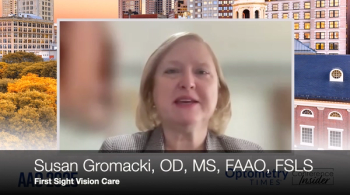
Q&A: What role does corneal hysteresis play in determining glaucoma risk?
Thomas A. Wong, OD, FNAP, and his co-authors Elise Regina, OD, and Kelly Armstrong, OD, discuss corneal hysteresis: part three.
Ahead of his technology article in the July 2022 issue of Optometry Times®, Thomas A. Wong, OD, FNAP, associate clinical professor of SUNY Optometry, and his co-authors Elise Regina, OD, and Kelly Armstrong, OD, both members of the SUNY Optometry class of 2022, discuss corneal hysteresis.
This transcript has been lightly edited for clarity:
What role does corneal hysteresis play in determining glaucoma risk?
Elise Regina, OD:
So the current risk factors that we all know right now..., the main five are old age, high IOP, CD ratio, high pattern standard deviation, and a thinner central corneal thickness. And also things that we consider in clinic include race, family history, the quality of the testing that we're getting and how long the patient has been followed for these things.
So earlier intervention is always better for these
It's still unclear how exactly corneal hysteresis is related to glaucoma. But it also may be a new independent risk factor for glaucoma that we as practitioners can use when we're diagnosing and treating our patients. Since the corneal hysteresis doesn't directly affect the IOP measurements the way the central corneal thickness does, it makes the association with the IOP minimal, which is a good thing for us.
So this literature is hypothesizing that the hysteresis may be a biomarker for the biomechanical properties of these tissues, and therefore the low corneal hysteresis readings would increase the risk for glaucomatous damage with IOP peaks and fluctuations.
Newsletter
Want more insights like this? Subscribe to Optometry Times and get clinical pearls and practice tips delivered straight to your inbox.




















































.png)


